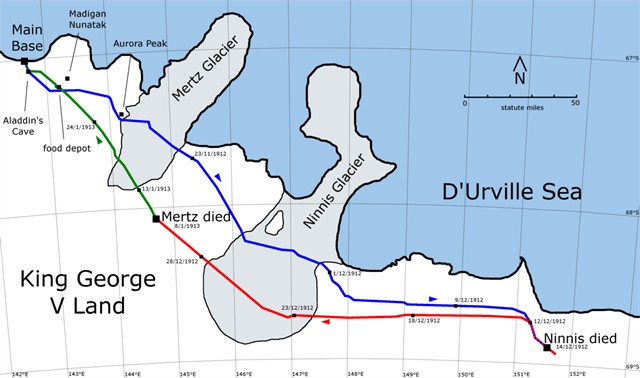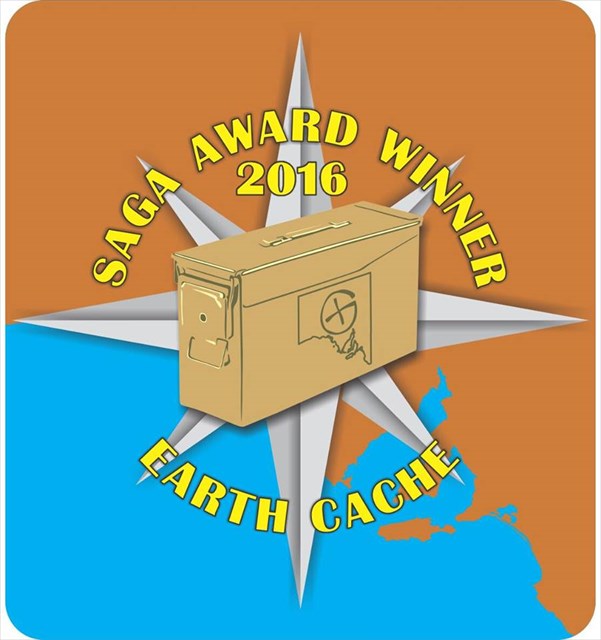Sir Douglas Mawson (5th May 1882 - 14 Oct 1958) was an Australian geologist and explorer. He is best know for being one of the key figures in the Heroic Age of Antarctic Exploration. Due to his likeness being used on the Australian $100 note between 1984 and 1996, this is how most Australians remember Mawson, dressed in Antarctic exploration gear, however his contribution to geology both at home and in the South Pacific is also worthy of note.
His first foray to Antarctica was with Ernest Shackleton's Nimrod expedition (1907-09) and was meant to be a short summer stay, however he and his mentor Edgeworth David stayed beyond their ships visit and in the company of Alistair Mackay became the first to pass Mt Erebus and make it to the magnetic south pole. Despite an offer to join Robert Falcon Scott's Terra Nova expedition, Mawson choose to lead his own expedition instead. This expedition would result in the three man Far Eastern Party which investigated the previously unexplored coastal regions of Antarctica west of Cape Adare. Mawson lead Lieutenant Belgrave Ninnis and Xavier Mertz and they made good progress initially, however disaster struck when Ninnis fell down a crevasse with the bulk of their provisions and was never seen again. Mawson and Mertz turned back but without adequate supplies the health of Mertz significantly deteriorated, and after several weeks of poor progress, he succumbed to his illnesses on the 8th of January.

From this point on Mawson alone travelled approximately 160km to return to Cape Denison. On the 17th day of his travels he came upon one of numerous supply caches that had been placed by teams searching for the party, as well as detailed information concerning his location and other supplies. Mawson had missed the search party by only six hours, but the supplies and information, combined with Mawson's resourcefulness ensured he survived the journey and made it back to base camp. Sir Edmund Hillary described Mawson's journey as "probably the greatest story of lone survival in Polar exploration" in his foreword to Lennard Bickel's book on the expedition.
Now on to the cache! The following is quote on the geology of granite is attributed to Freddo, to whom all credit belongs:
Granite rocks are plutonic igneous rocks, which were formed by slowly cooling pockets of magma trapped beneath the earth's surface. Granites are typically a hard rock with visible crystalline texture, rich in quartz and feldspar. Granite is the most common igneous rock of the Earth’s crust. An outcrop of granite on the earth's surface requires some kind of erosion to expose the buried material.1
To claim a find on this Earthcache please answer the two questions below. Please be respectful of the location, to most Mawson is a historical figure but to some his grave is the site of an ancestor.
- Describe the colour and an approximation of the size of the granite boulder. Is there any particular colouring that stands out?
- Where did the granite boulder originate from and why was this location chosen?
Please contact me via either email or the built in message center with your answers. You are free to log your find before doing so to keep find counts and sequences consistent, but I reserve the right to delete logs that do not fulfill the requirements.
1. A long way from home, Freddo, 2009. Retrieved from GC1X72H on the 16th of Feb, 2016.
